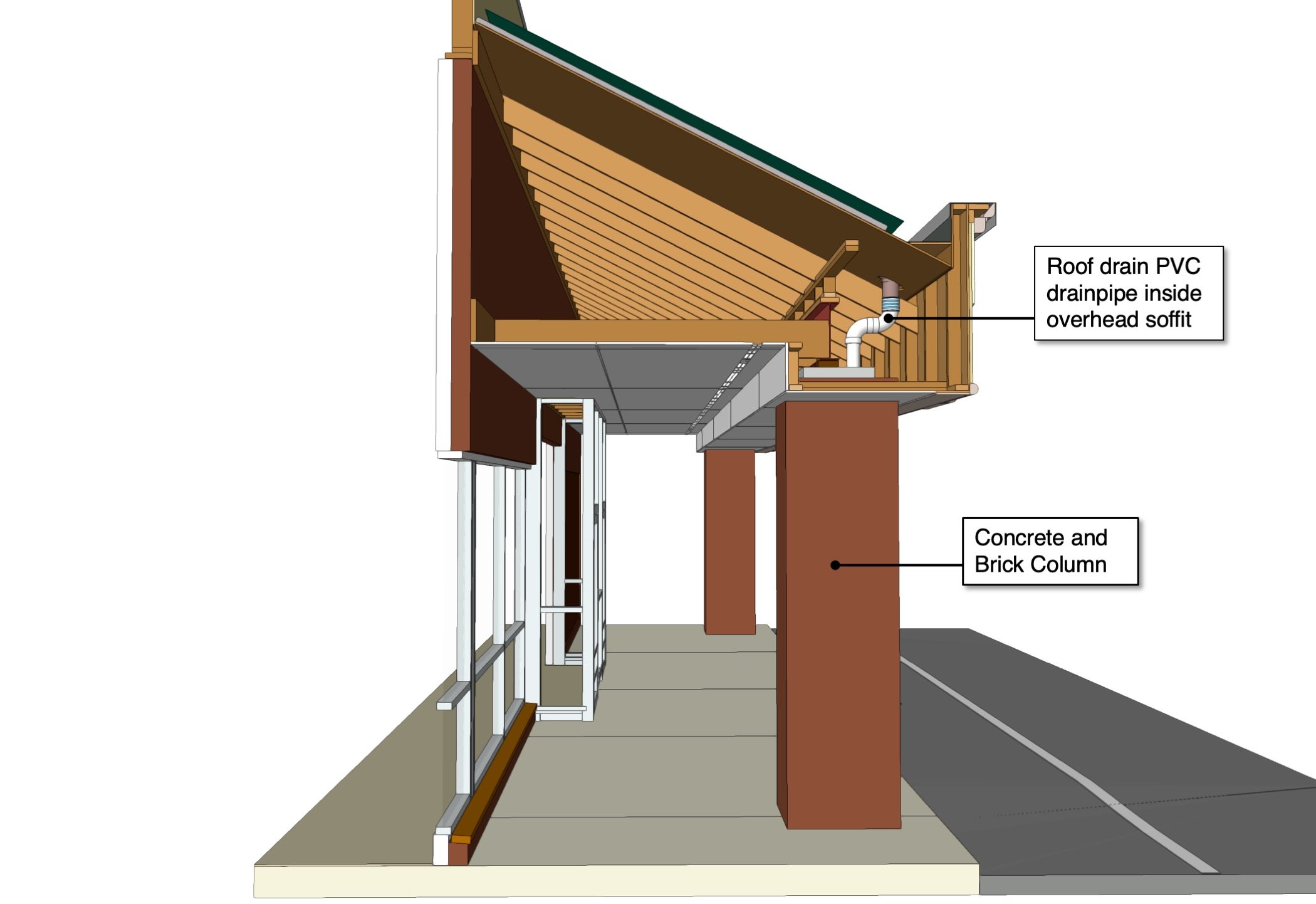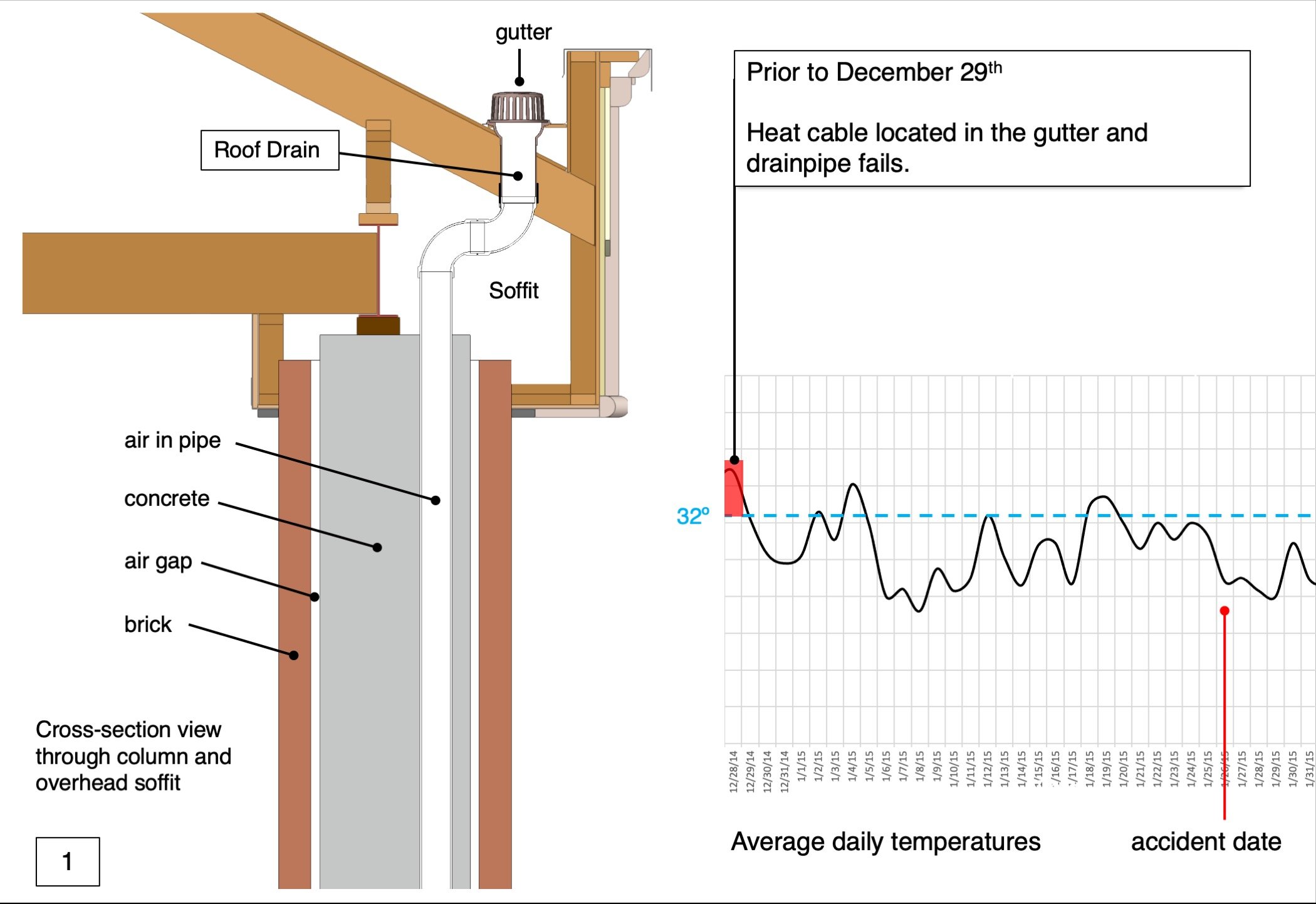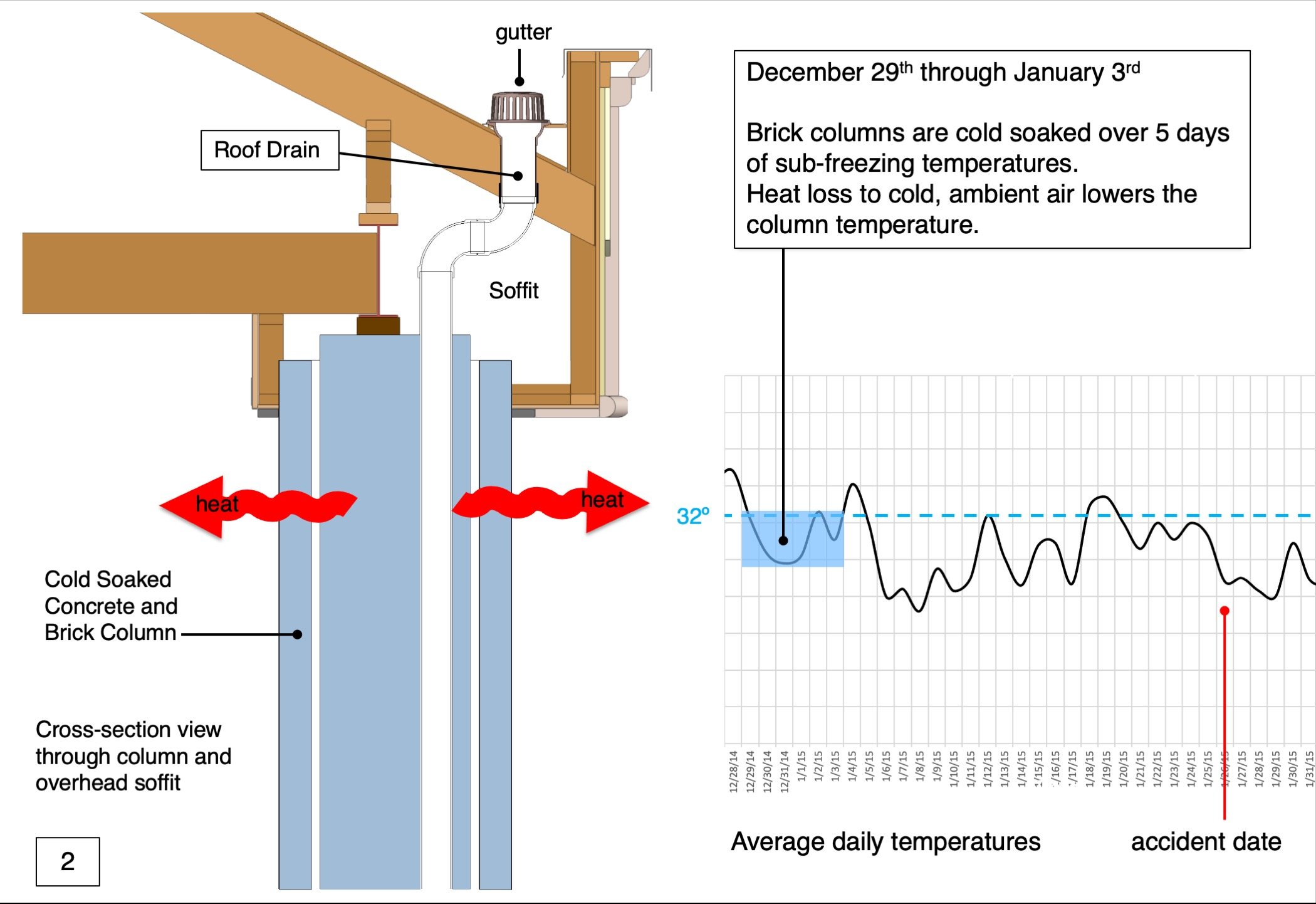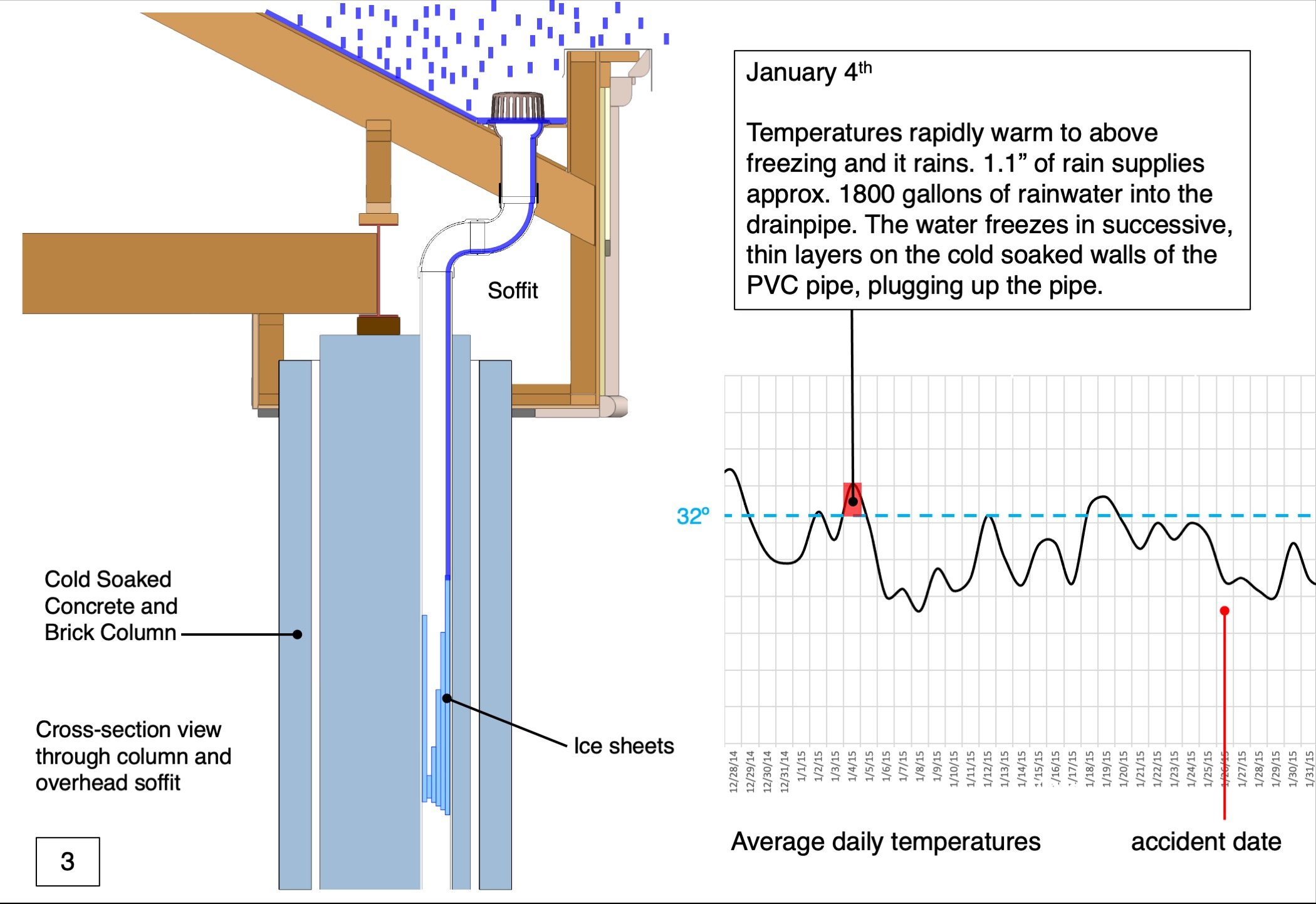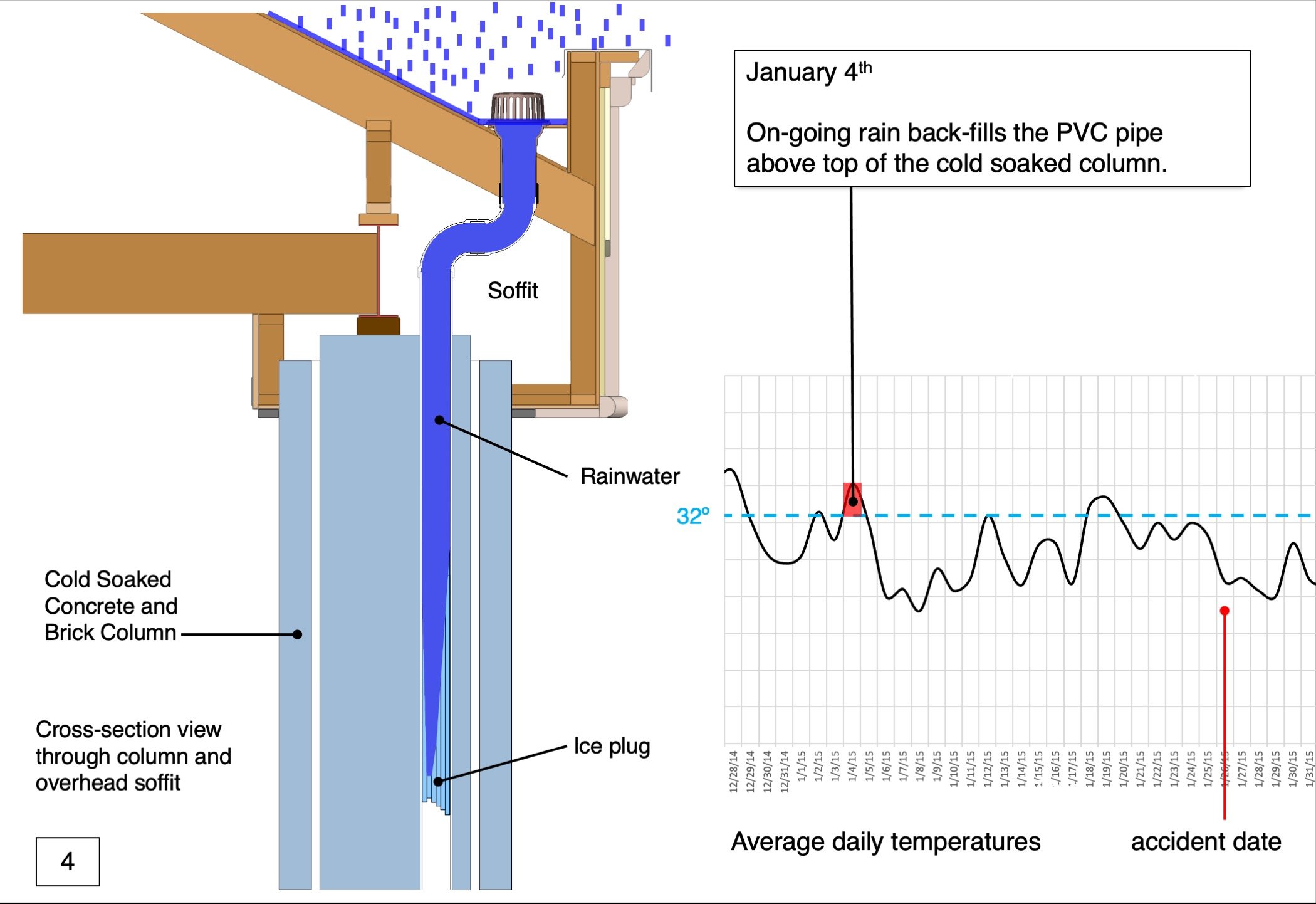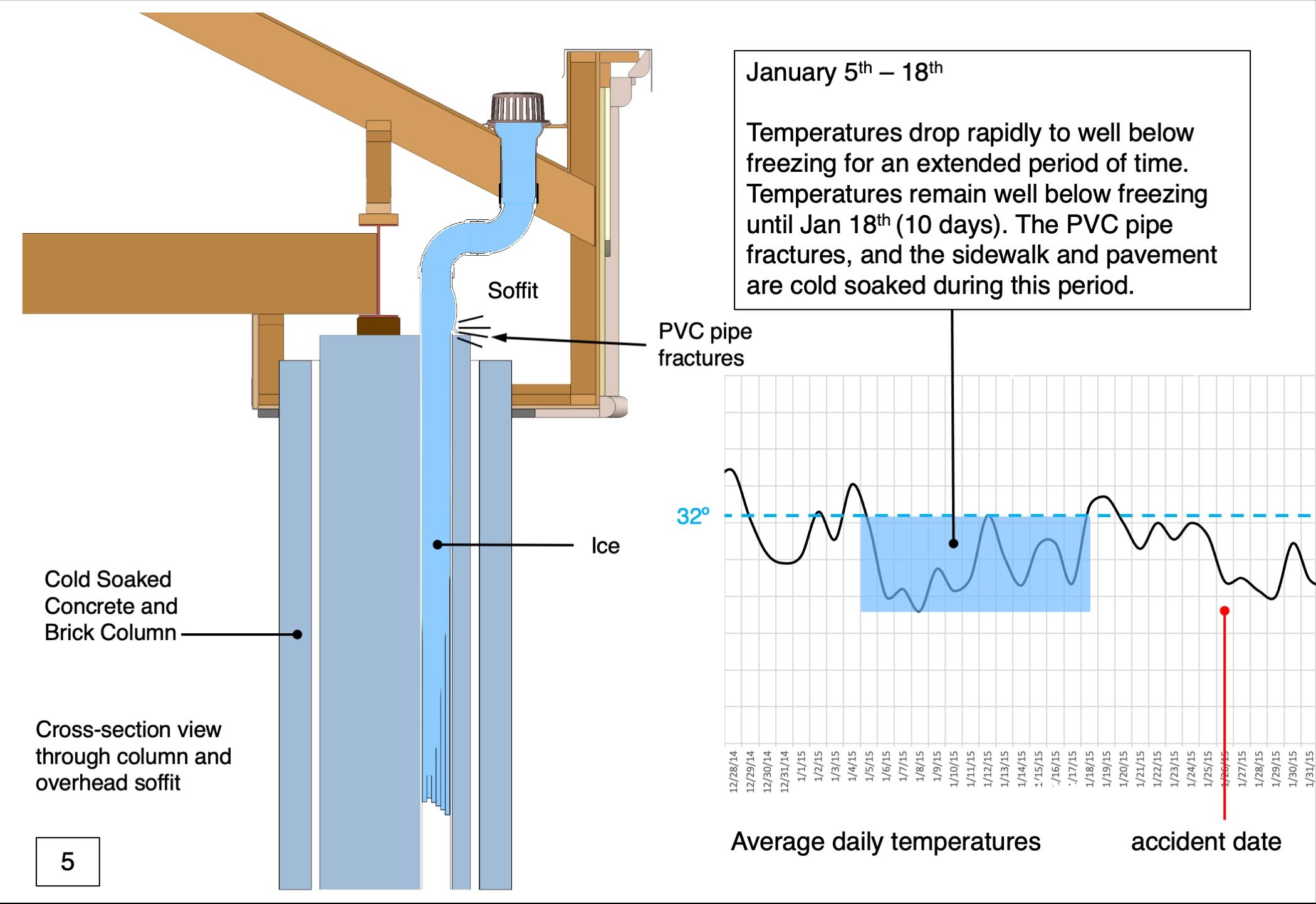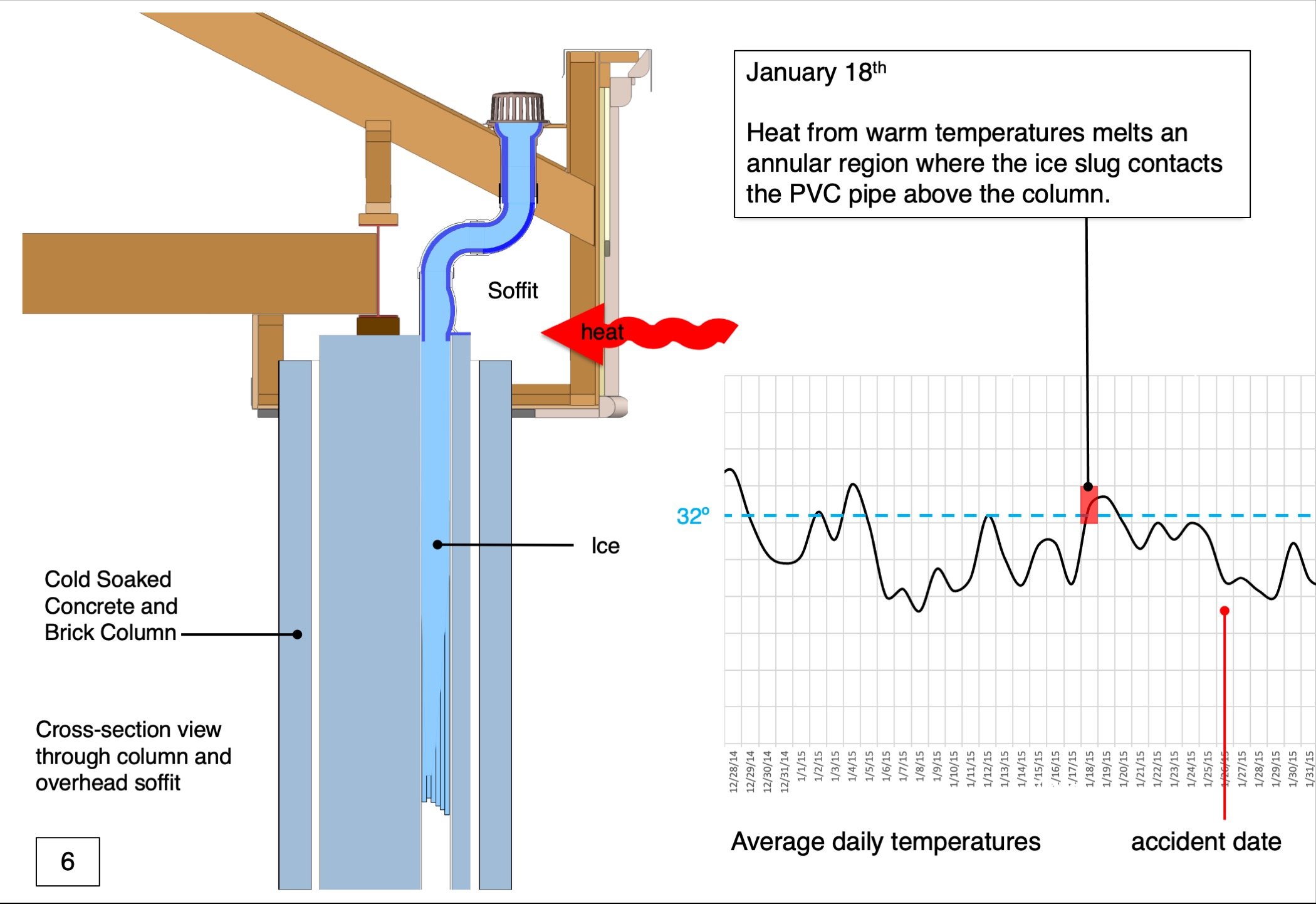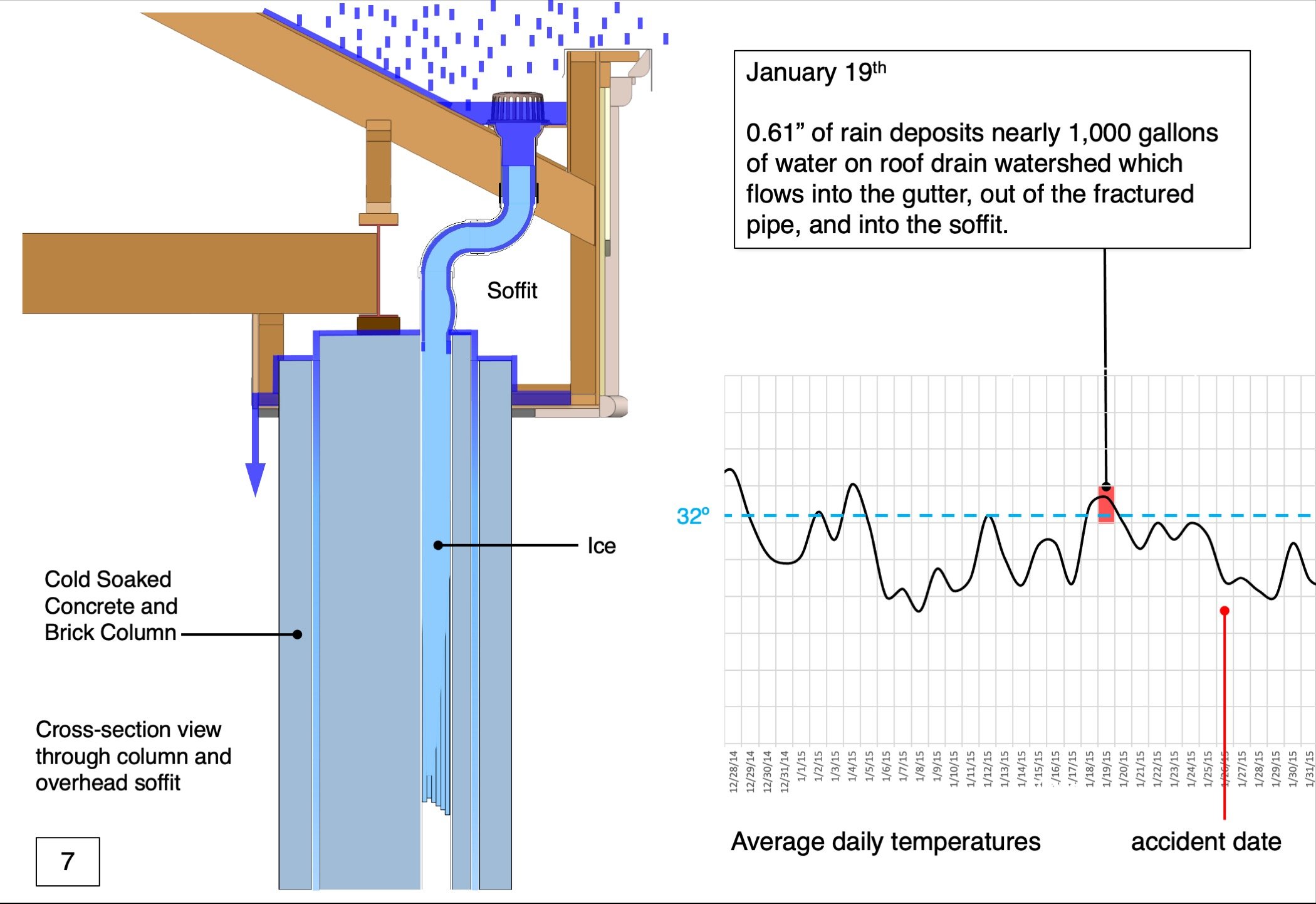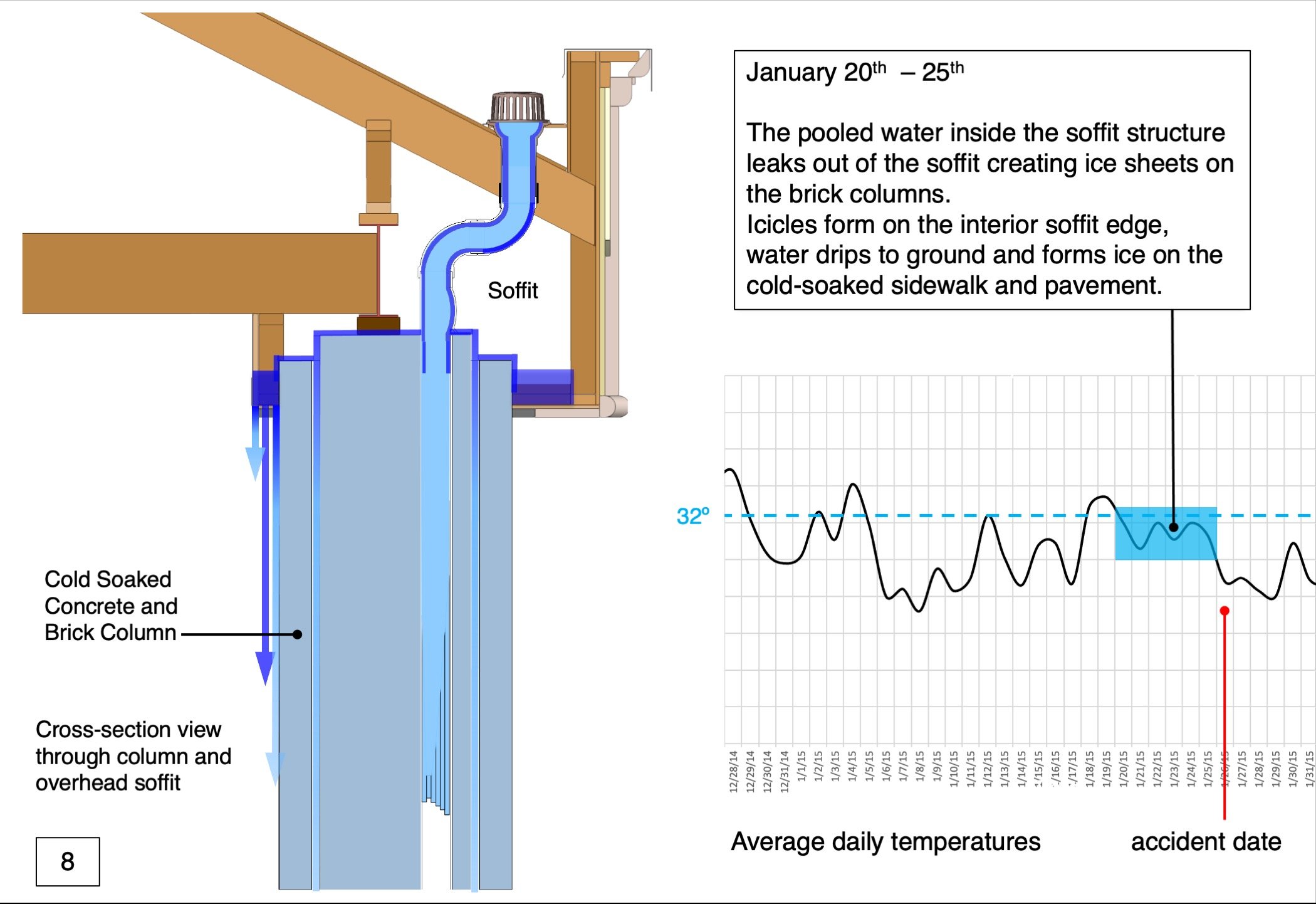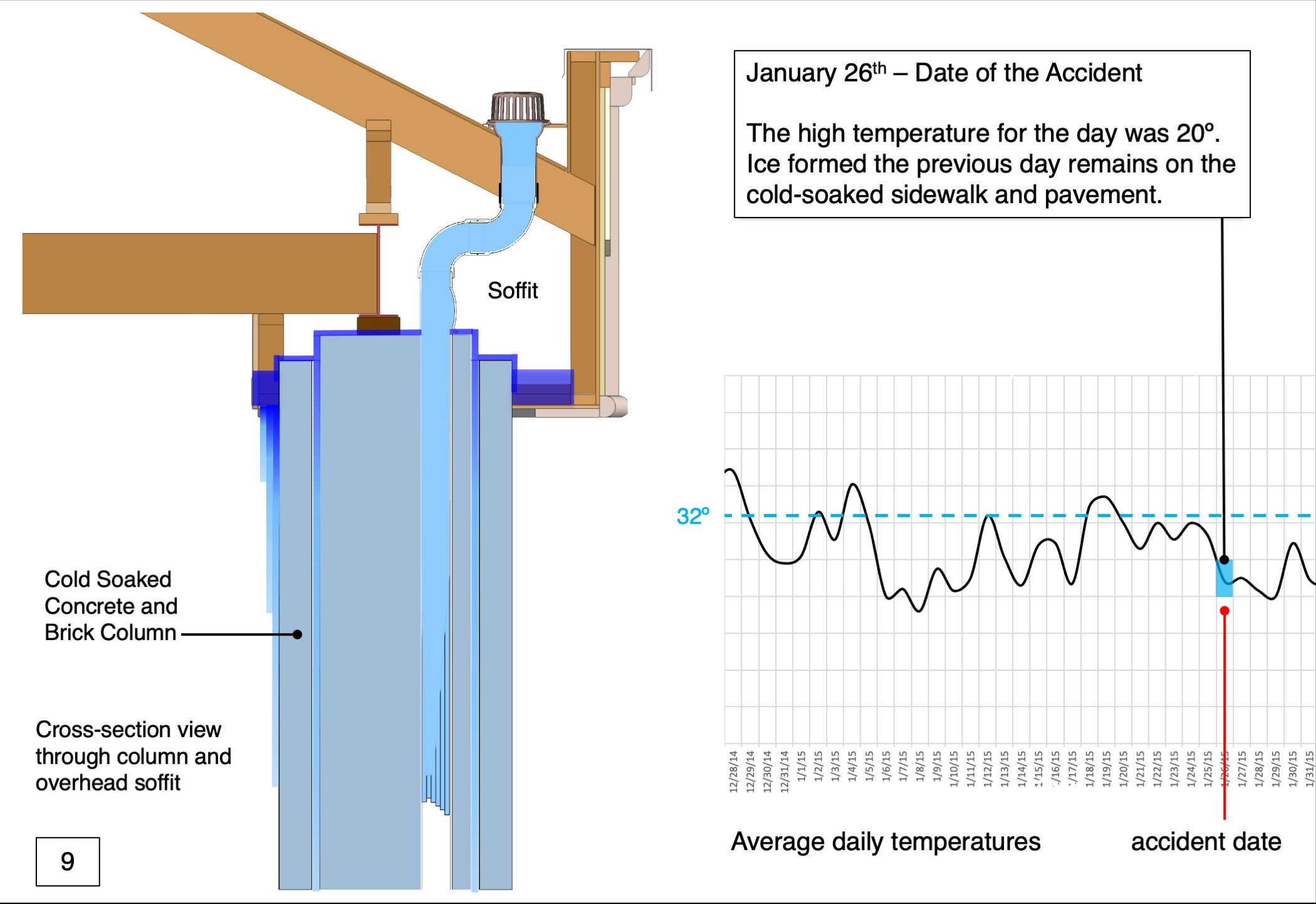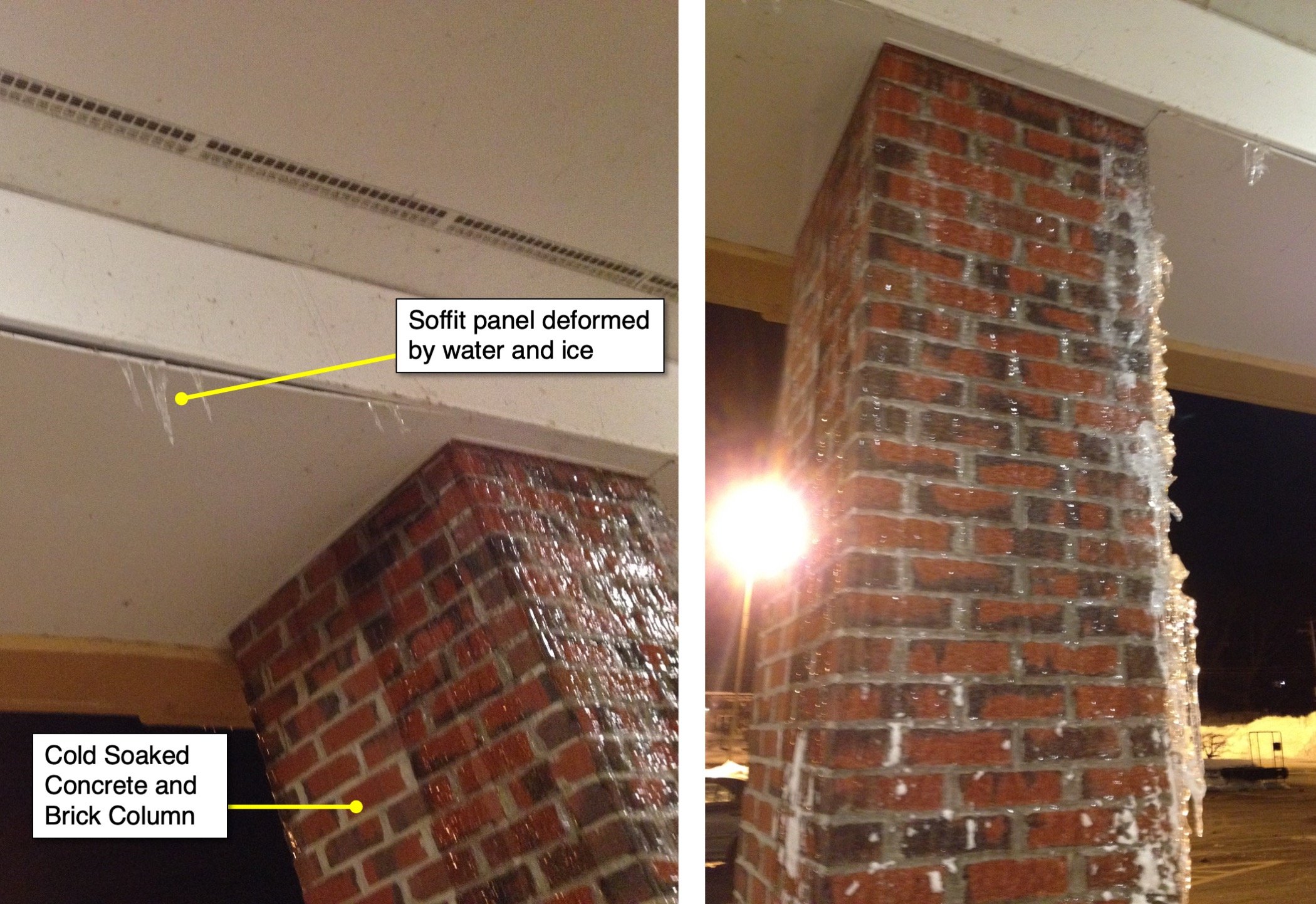Co-authored with Donald G. Parent, PE
Last month’s article explained how scene documentation in a slip-and-fall case resulted in the discovery of physical evidence of the building failure that contributed to the accident. The failure mechanism was a frozen and fractured PVC pipe that allowed water to fill an overhead soffit structure, leak out, and create icy conditions on the pavement. While the physical evidence demonstrated the failure, it was still necessary to understand the sequence of weather events that caused this failure. A series of illustrations depicting the construction details and a graphic timeline of weather events was created to explain the cause of the building failure and resulting conditions.
Photo of the accident scene
3D model of the building structure
A 3D computer model was created from building plans, photos, and on-site measurements. The model was utilized to create a series of 3D views that were incorporated into a comprehensive presentation used to explain the building failure mechanism. The 3D model also provided input into a thermal Finite Element Analysis (FEA) model that was used to determine the thermal behavior of the column structure under varying weather conditions.
3D model reconstruction
Weather Data Timeline
A weather data timeline was developed to show alternating periods of freezing and thawing combined with precipitation events over the four weeks preceding the accident on January 26th. Post-accident weather data analysis also provided the basis for concluding the conditions photographed eight days after the accident accurately reflected the conditions expected.
CLICK THROUGH THE SLIDESHOW BELOW TO SEE THE WEATHER DATA TIMELINE
The ice sheets on the cold-soaked column illustrate the flow of water from the overhead soffit to the ground below. Soffit panels were deformed by the weight of water and ice as shown in the photos below.
Photos of the cold soaked concrete and brick column
Conclusion
Combining the 3D computer model of the documented building elements, accident scene photos, and weather data enabled the expert analysis that determined the building failure was a direct cause of the ice forming in the area where a plaintiff sustained serious injuries.
In addition, a Thermal Finite Element Analysis model was created to demonstrate the temperature behavior of the cold-soaked masonry column under the weather conditions that occurred. This will be described in a future article.
CO-AUTHOR NOTE:
Donald G. Parent is a licensed professional engineer (PE) with more than 35 years of experience in the design and analysis of mechanical and electrical products and systems. Mr. Parent provides engineering consulting and expert witness services relating to product design, process development, and product launch, as well as patent and intellectual property-related matters. He has testified and been deposed as an expert on product design, safety, and intellectual property cases.
-
August 2023
- Aug 2, 2023 Introducing: The Expert Witness, a New Novel Aug 2, 2023
-
June 2023
- Jun 9, 2023 Finite Element Analysis Confirms Thermal Behavior of a Masonry Column Jun 9, 2023
-
April 2023
- Apr 27, 2023 3D Roof Fire Reconstruction Apr 27, 2023
-
March 2023
- Mar 24, 2023 Graphic Diagrams Demonstrate Biomechanics Mar 24, 2023
-
February 2023
- Feb 23, 2023 3D Modeling Combined with Weather Data Analysis Illustrates Expert’s Opinion Feb 23, 2023
-
January 2023
- Jan 25, 2023 Scene Documentation Reveals Evidence of Internal Building Failure Jan 25, 2023
-
August 2022
- Aug 25, 2022 Graphic Reconstruction Proves Theory in a Motor Vehicle Accident - Part Two Aug 25, 2022
-
July 2022
- Jul 20, 2022 Graphic Reconstruction Proves Theory in a Motor Vehicle Accident Jul 20, 2022
-
June 2022
- Jun 15, 2022 Litigation Graphics Strategies Explain a Complicated Loss Jun 15, 2022
-
May 2022
- May 17, 2022 Do I Need a Demonstrative Evidence Expert to Illustrate My Testimony? May 17, 2022
-
April 2022
- Apr 14, 2022 Arc Furnace Failure Illustrated Apr 14, 2022
-
March 2022
- Mar 23, 2022 Fire Litigation Exhibit Options Mar 23, 2022
-
February 2022
- Feb 16, 2022 Gas Explosion Investigation Enhanced by 3D Reconstruction of Building and HVAC System Feb 16, 2022
-
January 2022
- Jan 18, 2022 Scene Reconstruction Illustrates Non-Compliant Furnace Installation that Caused a Fire Jan 18, 2022
- Jan 5, 2022 3D Scene Reconstruction of Cold Storage Facility Serves as a Critical Tool in Fire Investigation Jan 5, 2022


